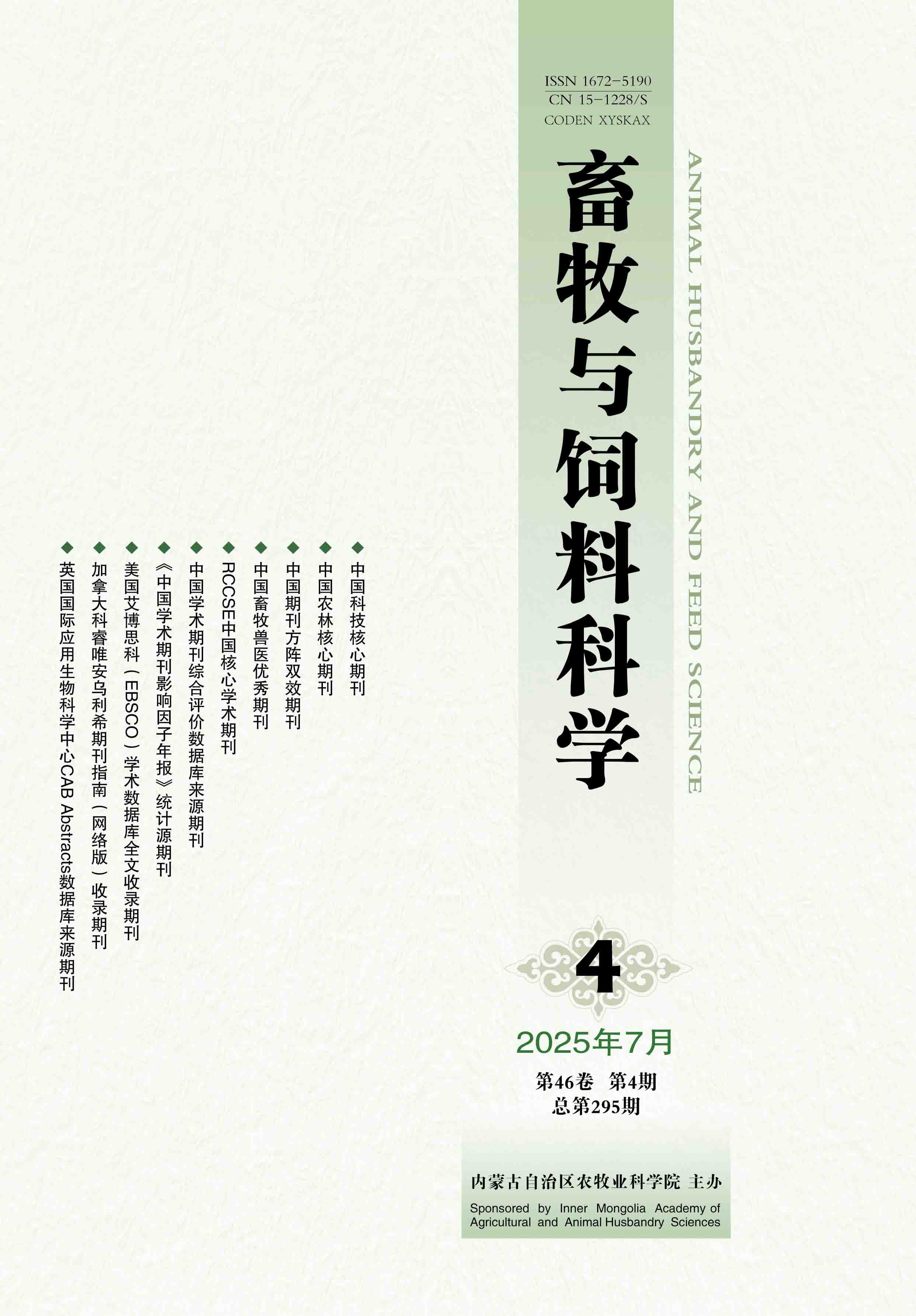Select
Isolation and Identification of the Main Pathogenic Bacteria Associated with Subclinical Mastitis in Dairy Cows in Dry Period and Evaluation of In Vitro Antibacterial Effects of Two Antibiotics
AI Junjie, DAI Xiaohua, HE Wei, SONG Linqing, WANG Yanbin, WANG Limin, FENG Haoqiang
2024, 45(2):
122-128.
doi:10.12160/j.issn.1672-5190.2024.02.016
Abstract
(
185 )
PDF (1189KB)
(
35
)
Save
References |
Related Articles |
Metrics
[Objective] This study was conducted to isolate and identify the common pathogenic bacteria associated with subclinical mastitis in dairy cows in Xinjiang Uygur Autonomous Region, and to evaluate the in vitro antibacterial effects of cefalonium and rifaximin against the clinical bacterial isolates. [Method] The subclinical mastitis in dairy cows in dry period in a dairy farm in Changji Hui Autonomous Prefecture, Xinjiang Uygur Autonomous Region was diagnosed using Lanzhou mastitis test (LMT). The bacterial isolation and species identification of a total of 74 collected milk samples were performed using streak plate method and 16S rDNA sequence analysis method. The minimum inhibitory concentration (MIC) and minimum bactericidal concentration (MBC) of cefalonium and rifaximin against the clinical isolates were determined by micro-broth dilution method. [Result] A total of 103 pathogenic bacterial isolates belonging to 9 species were obtained from the 74 milk samples. Among them, Staphylococcus aureus (S. aureus , n =35), Escherichia coli (E. coli , n =24) and Staphylococcus chromogenes (S. chromogenes , n =15) were found as the dominant species, accounting for 33.98%, 23.30% and 14.56% of the total number of the isolates, respectively. Staphylococcus simulans (S. simulans , n =10), Staphylococcus epidermidis (S. epidermidis , n =6), Enterococcus faecium (E. faecium , n =5), Staphylococcus haemolyticus (S. haemolyticus , n =4), Bacillus licheniformis (B. licheniformis , n =3) and Staphylococcus saprophyticus (S. saprophyticus , n =1) were also observed, accounting for 9.70%, 5.83%, 4.85%, 3.88%, 2.91% and 0.97% of the total number of the isolates, respectively. The in vitro antibacterial test showed that the MICs of cefalonium against S. aureus , E. coli , S. chromogenes , S. haemolyticus , S. epidermidis , S. saprophyticus , E. faecium , S. simulans and B. licheniformis were 0.12, 3.91, 0.98, 0.06, 0.98, 0.98, 3.91, 0.06 and 0.49 μg/mL, respectively, and the corresponding MBCs were 0.24, 7.81, 1.95, 0.12, 1.95, 1.95, 7.81, 0.24 and 1.95 μg/mL, respectively. The MICs of rifaximin against S. aureus , E. coli , S. chromogenes , S. haemolyticu s, S. epidermidis , S. saprophyticus , E. faecium , S. simulans and B. licheniformis were 0.20, 6.25, 1.56, 0.78, 1.56, 1.56, 12.50, 0.20 and 0.20 μg/mL, respectively, and the corresponding MBCs were 0.78, 12.50, 3.13, 1.56, 3.13, 3.13, 12.50, 0.78 and 1.56 μg/mL, respectively. [Conclusion] The main pathogenic bacteria causing subclinical mastitis in dairy cows in dry period in this farm were S. aureus, E. coli and S. chromogenes . Both cefalonium and rifaximin had good antibacterial effects against the clinical isolates.








